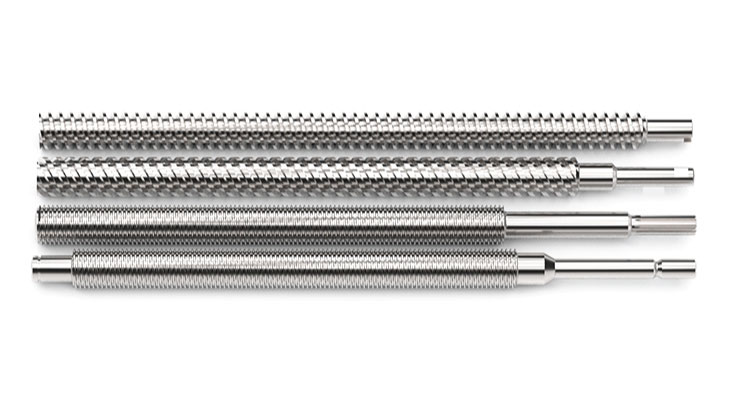Understanding The options for Lead Screw End-Machining

Although lead screw end machining is not required for every application, the vast majority of applications do involve some modification to one or both of the lead screw's ends. Here, we discuss some of the common elements that go into end machining, related terms, and other concepts that should be considered when utilizing a lead screw in your linear motion application.
At Helix, most of the screws that we ship have end machining applied before leaving the factory. This often involves the machining of standard ends, but we also offer custom end machining when needed. We also provide various end mounting products in the form of our EZZE-MOUNT product line. This proven line of products is an ideal solution for virtually any mounting configuration of your lead screw assembly.
As promised, here are some of the things that you should consider when it comes to machining the ends of your lead screw:
Land Diameter: Land diameter is the outside diameter of the screw. The difference between the land diameter and the bearing journal is the resulting bearing shoulder.
Root Diameter: The diameter of the screw measured at the bottom of the thread. This diameter is used for determining journal sizes. If the bearing journal diameter is larger than the root diameter, thread tracings may be visible. Generally, these tracings do not affect bearing performance. This is evident in the image above.
Journal: A smooth diameter machined on the end of a screw used as a mounting surface for bearings, couplings, pulleys, gears, and other components.
Straightness: Although Helix screws are manufactured from straight, cylindrical material, internal stresses may cause the material to bend. When ordering specific lengths or cut material without end machining, straightening is always recommended. Handling or machining of screws can also cause the material to bend. Before, during, and after machining, additional straightening is required.
Concentricity: Concentricity refers to multiple diameters sharing the same center. Close concentricity allows all components to rotate around the same axis for end machining, resulting in smooth operation and long operating life.
End Fixity: End fixity refers to the method by which the ends of the screw are supported. The degree of end fixity is related to the amount of restraint of the ends of the screw.
The three basic types of end fixity are:
| Free | No support |
| Simple | Shaft restrained against radial and/or axial loads |
| Fixed | Shaft rigidly restrained against radial, axial, and moment loads |
Locknut Threads: Locknut threads, where appropriate, are included to facilitate the use of a locknut to retain the bearing in position on the shaft. The thread used on standard machined ends follows American National Form NS Class 3. Precision ground locknuts are available in a particular order.
Undercuts and Radii: Whenever a shaft changes diameter, an undercut or a radius is machined into the transition to minimize stress concentration. Undercuts are preferred for bearing shoulders because they allow clearance for the corner of the bearing.
Approval Drawings: If custom ends or particular dimensions are desired, we are happy to create an approval drawing for your review. These drawings will show all of the critical dimensions with appropriate tolerance.
These are the primary concerns that should be understood and addressed when considering the end machining of your lead screws. There can be others, depending on the particular application, and we are always available to assist you should you have any questions or concerns, so don't hesitate to contact one of our experts.


